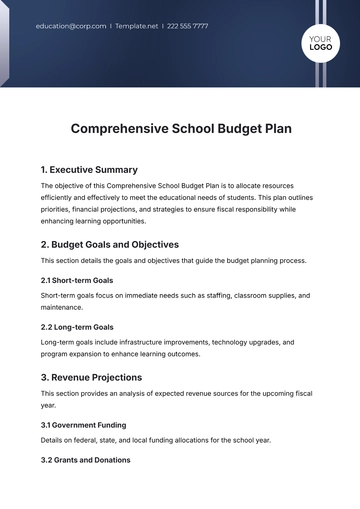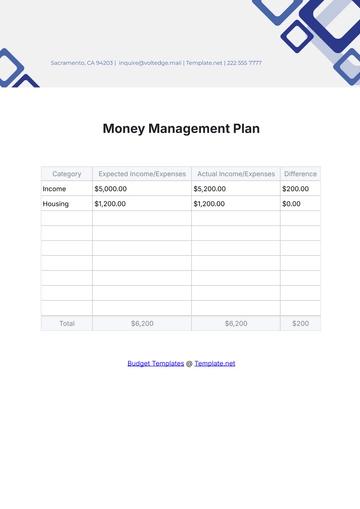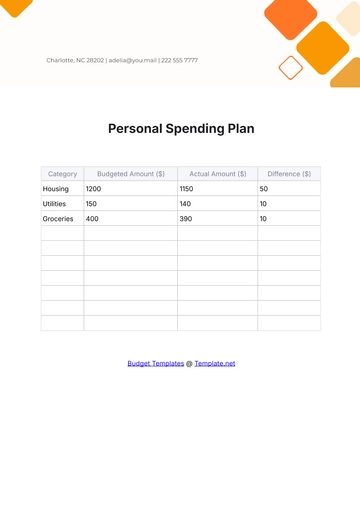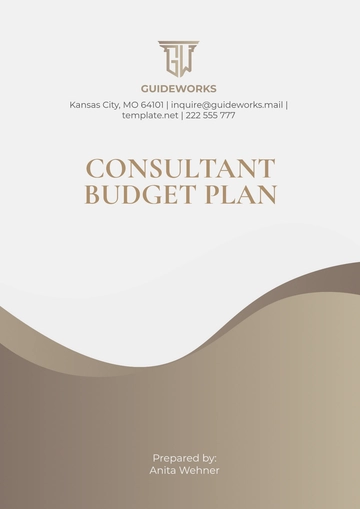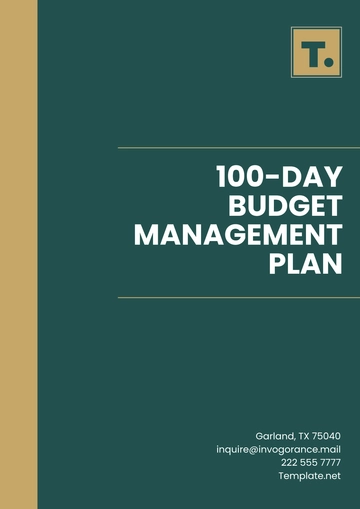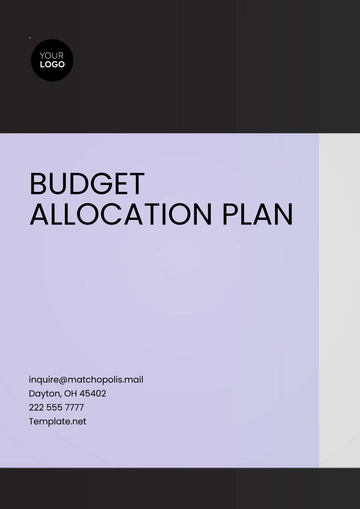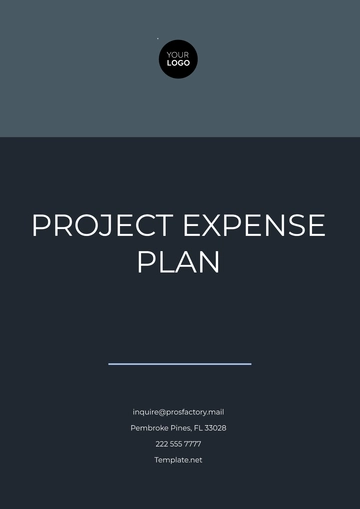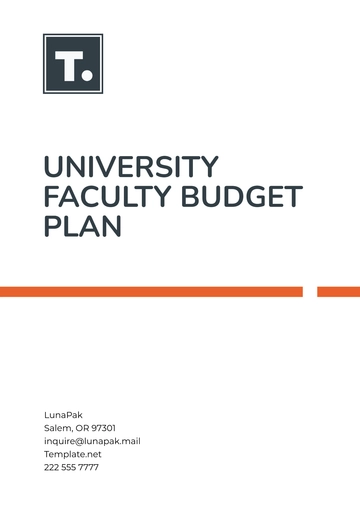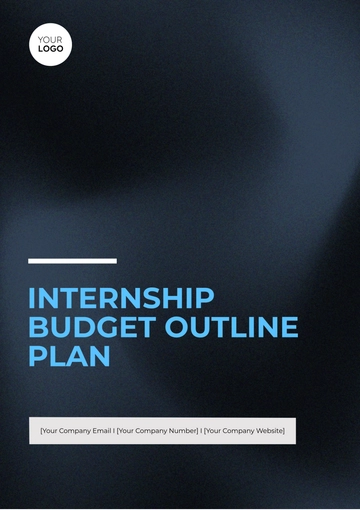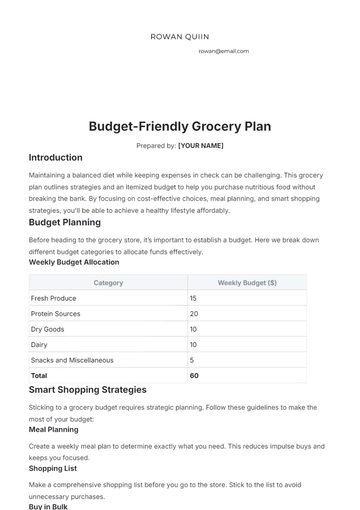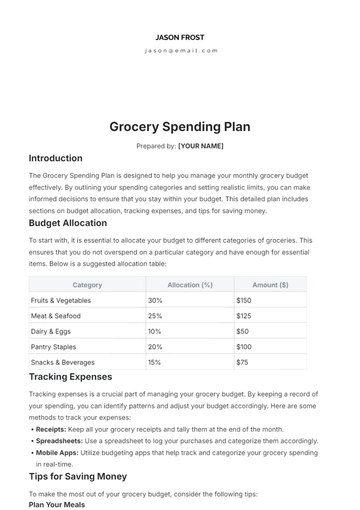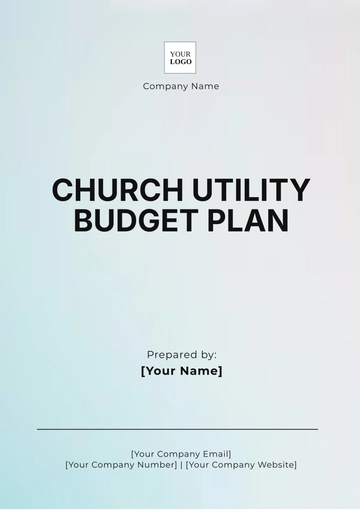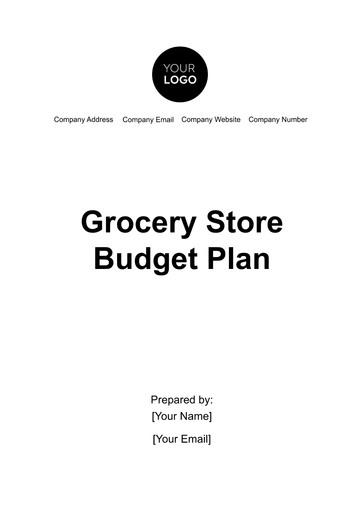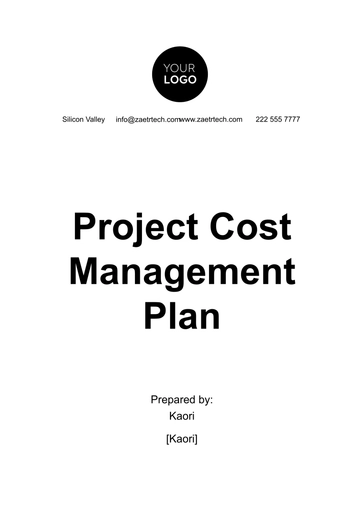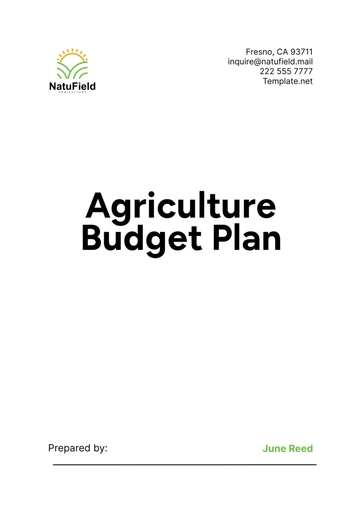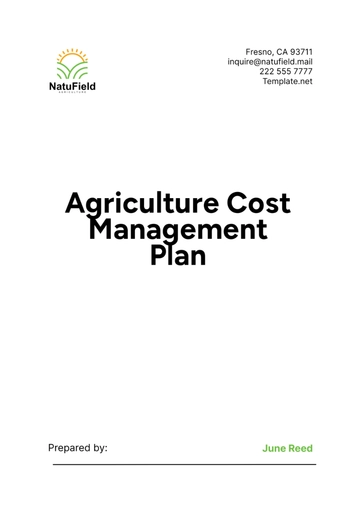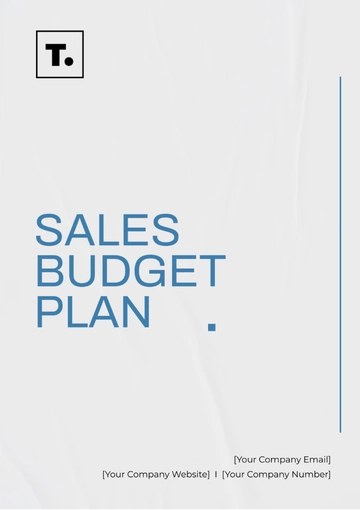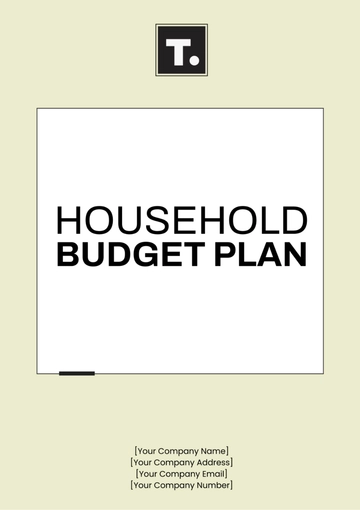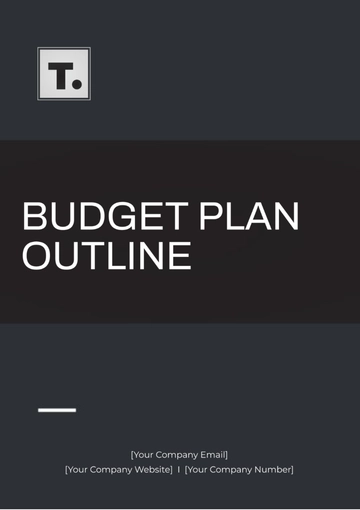Free Sales Budget Plan
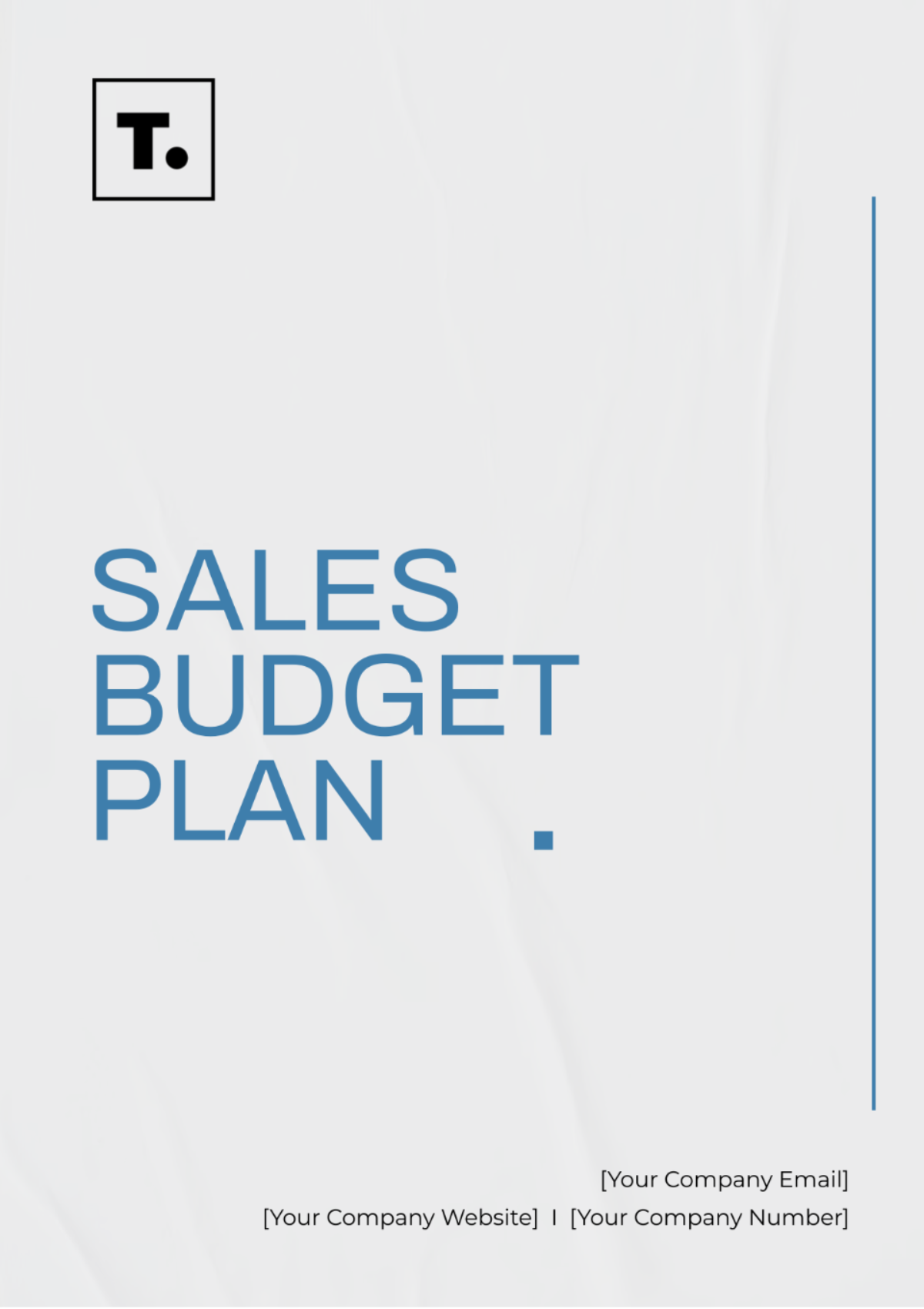
I. Introduction
The Sales Budget Plan for [Your Company Name] outlines our strategies and targets for maximizing revenue generation in the fiscal year [Year]. It provides a comprehensive forecast of expected sales volumes and revenues across different product lines or business segments, driving our growth initiatives and market expansion efforts.
II. Market Analysis
Market Trends: Analysis of current market trends indicates a growing demand for [Your Company Name]'s products/services.
Competitive Landscape: Assessment of competitors' strategies and market positioning reveals opportunities for differentiation and market penetration.
Customer Preferences: Understanding customer preferences and buying behavior helps tailor our sales strategies and product offerings to meet evolving needs.
III. Sales Objectives
Revenue Growth: Our primary objective is to achieve a 20% increase in sales revenue by [Year]. This ambitious target aligns with our strategic goal of expanding market share and driving sustainable growth.
Market Expansion: We aim to penetrate new markets and customer segments to diversify our revenue streams and reduce dependency on existing markets.
Customer Retention: Retaining existing customers and fostering long-term relationships through exceptional service and product quality is integral to our sales strategy.
IV. Sales Forecast
Based on historical sales data, market research, and growth projections, we anticipate the following sales volumes and revenues for each product/service category.
Category | Forecasted Sales Volume | Forecasted Revenue (USD) |
|---|---|---|
Product A | 10,000 units | $500,000 |
Product B | 15,000 units | $750,000 |
Service X | 100 clients | $300,000 |
Service Y | 50 clients | $200,000 |
V. Sales Strategies
Marketing Campaigns: Implementation of targeted marketing campaigns across digital and traditional channels to increase brand awareness and drive customer acquisition.
Sales Promotions: Offering discounts, promotions, and bundled packages to incentivize purchases and stimulate demand.
Channel Expansion: Exploring new sales channels such as online marketplaces or strategic partnerships to reach untapped customer segments.
VI. Performance Metrics
Sales Revenue: Targeting a monthly growth rate of 8% to achieve our annual revenue target.
Customer Acquisition Cost (CAC): Aim to reduce CAC by 10% through more efficient marketing and sales strategies.
Customer Lifetime Value (CLV): Increasing CLV by 15% through improved customer retention and upselling/cross-selling initiatives.
VII. Budget Allocation
Marketing: Allocation of $[Amount] to marketing activities, including advertising, promotions, and branding initiatives.
Sales Team: Investment of $[Amount] in sales team training, incentives, and tools to enhance productivity and effectiveness.
Technology: Budget of $[Amount] for upgrading CRM systems and sales automation tools to streamline processes and improve sales performance tracking.
VIII. Conclusion
The Sales Budget Plan provides a strategic roadmap for [Your Company Name] to achieve its sales objectives and drive revenue growth in the competitive market landscape. By implementing targeted sales strategies, leveraging market insights, and optimizing resource allocation, we are poised to capitalize on market opportunities and strengthen our position as a market leader in the industry.
- 100% Customizable, free editor
- Access 1 Million+ Templates, photo’s & graphics
- Download or share as a template
- Click and replace photos, graphics, text, backgrounds
- Resize, crop, AI write & more
- Access advanced editor
Maximize your sales forecasting with the Sales Budget Plan Template offered by Template.net. This customizable and downloadable tool is designed to help you track and manage your sales targets and expenses effortlessly. Whether you're planning for a new product launch or setting annual goals, this template is printable and editable in our AI Editor Tool, ensuring it fits your specific needs and enhances your sales strategy.
You may also like
- Finance Plan
- Construction Plan
- Sales Plan
- Development Plan
- Career Plan
- Budget Plan
- HR Plan
- Education Plan
- Transition Plan
- Work Plan
- Training Plan
- Communication Plan
- Operation Plan
- Health And Safety Plan
- Strategy Plan
- Professional Development Plan
- Advertising Plan
- Risk Management Plan
- Restaurant Plan
- School Plan
- Nursing Home Patient Care Plan
- Nursing Care Plan
- Plan Event
- Startup Plan
- Social Media Plan
- Staffing Plan
- Annual Plan
- Content Plan
- Payment Plan
- Implementation Plan
- Hotel Plan
- Workout Plan
- Accounting Plan
- Campaign Plan
- Essay Plan
- 30 60 90 Day Plan
- Research Plan
- Recruitment Plan
- 90 Day Plan
- Quarterly Plan
- Emergency Plan
- 5 Year Plan
- Gym Plan
- Personal Plan
- IT and Software Plan
- Treatment Plan
- Real Estate Plan
- Law Firm Plan
- Healthcare Plan
- Improvement Plan
- Media Plan
- 5 Year Business Plan
- Learning Plan
- Marketing Campaign Plan
- Travel Agency Plan
- Cleaning Services Plan
- Interior Design Plan
- Performance Plan
- PR Plan
- Birth Plan
- Life Plan
- SEO Plan
- Disaster Recovery Plan
- Continuity Plan
- Launch Plan
- Legal Plan
- Behavior Plan
- Performance Improvement Plan
- Salon Plan
- Security Plan
- Security Management Plan
- Employee Development Plan
- Quality Plan
- Service Improvement Plan
- Growth Plan
- Incident Response Plan
- Basketball Plan
- Emergency Action Plan
- Product Launch Plan
- Spa Plan
- Employee Training Plan
- Data Analysis Plan
- Employee Action Plan
- Territory Plan
- Audit Plan
- Classroom Plan
- Activity Plan
- Parenting Plan
- Care Plan
- Project Execution Plan
- Exercise Plan
- Internship Plan
- Software Development Plan
- Continuous Improvement Plan
- Leave Plan
- 90 Day Sales Plan
- Advertising Agency Plan
- Employee Transition Plan
- Smart Action Plan
- Workplace Safety Plan
- Behavior Change Plan
- Contingency Plan
- Continuity of Operations Plan
- Health Plan
- Quality Control Plan
- Self Plan
- Sports Development Plan
- Change Management Plan
- Ecommerce Plan
- Personal Financial Plan
- Process Improvement Plan
- 30-60-90 Day Sales Plan
- Crisis Management Plan
- Engagement Plan
- Execution Plan
- Pandemic Plan
- Quality Assurance Plan
- Service Continuity Plan
- Agile Project Plan
- Fundraising Plan
- Job Transition Plan
- Asset Maintenance Plan
- Maintenance Plan
- Software Test Plan
- Staff Training and Development Plan
- 3 Year Plan
- Brand Activation Plan
- Release Plan
- Resource Plan
- Risk Mitigation Plan
- Teacher Plan
- 30 60 90 Day Plan for New Manager
- Food Safety Plan
- Food Truck Plan
- Hiring Plan
- Quality Management Plan
- Wellness Plan
- Behavior Intervention Plan
- Bonus Plan
- Investment Plan
- Maternity Leave Plan
- Pandemic Response Plan
- Succession Planning
- Coaching Plan
- Configuration Management Plan
- Remote Work Plan
- Self Care Plan
- Teaching Plan
- 100-Day Plan
- HACCP Plan
- Student Plan
- Sustainability Plan
- 30 60 90 Day Plan for Interview
- Access Plan
- Site Specific Safety Plan

